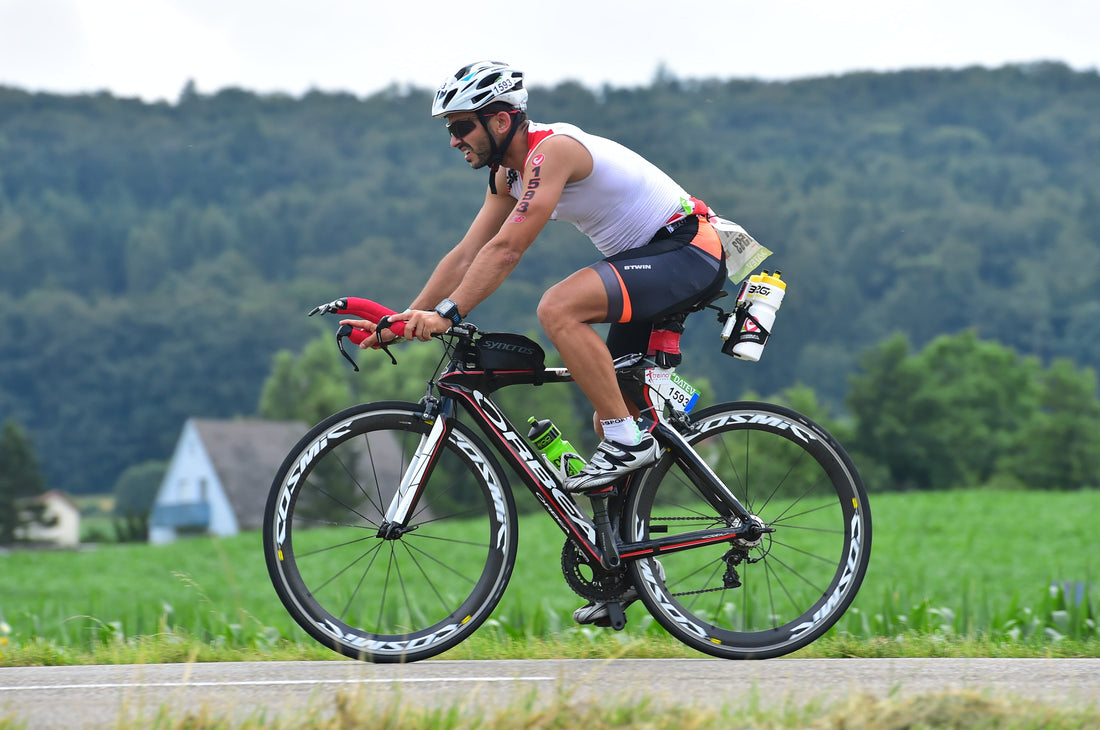
Triathlon: Benefits of Functional Training
Share
Triathlon is one of the most demanding sports, combining swimming, cycling, and running. To achieve optimal performance and prevent injuries, functional training has been gaining prominence as an essential tool for triathletes of all levels.

In this article, we'll explore how functional training can boost your performance, improve your overall fitness, and make your body more efficient and resilient to face the challenges of triathlon.
✅ What is Functional Training?
Functional training is a type of training that simulates natural movements from everyday life and sport, with the aim of improving strength, stability, balance, coordination and mobility.
Unlike conventional training with isolated machines, functional training involves several muscle groups at the same time, which makes it highly effective for athletes who need a balanced body prepared for various types of effort.
💪 Benefits of Functional Training for Triathletes
1. Improves performance in all three modalities
Functional training works muscles that are often neglected. With exercises like lunges, planks, burpees, or kettlebell swings, you can transfer strength and stability to swimming, cycling, and running.
2. Increases muscular endurance
Triathlon requires prolonged effort. Functional training improves muscular endurance, allowing you to maintain a steady pace for longer without fatigue.
3. Improves balance and coordination
Essential for maintaining body control while swimming, cycling, or running, even when you're tired. Exercises on unstable surfaces or with only one support are great allies.
4. Prevents injuries
A functional body is one that's more balanced and better prepared to absorb impacts. Working on your core, postural control, and mobility helps reduce the risk of common triathlon injuries, such as tendonitis or lower back pain.
5. Strengthens the core
The core is essential for technique and efficiency in all triathlon disciplines. A strong core improves posture and power transfer.
6. Easily adapts to home training
You can do functional training at home with little or no equipment. Perfect for incorporating into active rest days or supplementing your training plan when you can't get out.
🕒 20-Minute Functional Workout Example for Triathletes
-
Warm-up (3 minutes)
- Jumping jacks
- Joint mobilization
-
Main workout (3 rounds):
- 12 alternating lunges with dumbbells or body weight
- 30 seconds of front plank
- 10 push-ups
- 20 mountain climbers
- 15 kettlebell swings or jump squats
-
Stretching and breathing (3 minutes)
- Hip flexor stretching
- Thoracic rotation
- Deep breathing
🏁 Conclusion
Functional training doesn't replace specific swimming, cycling, and running training, but it complements it intelligently and effectively. Regularly including it in your training plan helps you become a stronger, more efficient, and less injury-prone triathlete.
If you practice triathlon or are thinking about starting, try including 1 to 2 functional training sessions per week — your body (and your times) will thank you.
📩 Sign up today and start your fitness journey for just €7.25/month!
👉 Subscribe now


